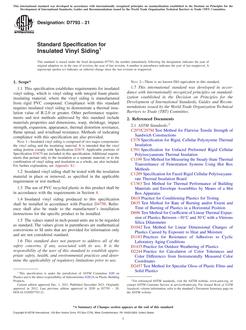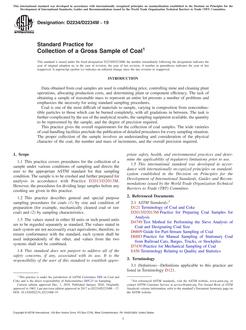1.1 This test method provides a procedure for performing a torsional ring shear test under a drained condition to determine the fully softened shear strength and nonlinear strength envelope of cohesive soils. The fully softened strength is used to evaluate the stability of slopes that do not have a preexisting shear surface. In addition, the fully softened shear strength corresponds to the peak shear strength of a normally consolidated specimen. This test method focuses on the use of a reconstituted specimen to measure the fully softened strength. This test method is performed by shearing a normally consolidated, reconstituted specimen at a controlled displacement rate until the peak shear resistance has been obtained. Generally, the drained fully softened failure envelope is determined at three or more effective normal stresses. A separate test specimen must be used for each normal stress to measure the fully softened strength otherwise a post-peak or even residual strength will be measured if the same specimen is used because of the existence of a shear surface.
1.2 The ring shear apparatus allows a reconstituted specimen to be normally consolidated at the desired normal stress prior to drained shearing. This simulates the field conditions under which the fully softened strength develops in overconsolidated clays, claystones, mudstones, and shales.
1.3 A shear stress-displacement relationship may be obtained from this test method. However, a shear stress-strain relationship or any associated quantity, such as modulus, cannot be determined from this test method because possible soil extrusion and volume change prevents defining the height needed in the shear strain calculations. As a result, shear strain cannot be calculated but shear displacement can be calculated.
1.4 The selection of normal stresses and final determination of the shear strength envelope for design analyses and the criteria to interpret and evaluate the test results are the responsibility of the engineer or office requesting the test.
1.5 The values stated in SI units are to be regarded as the standard. The values given in parentheses are mathematical conversions to inch-pound units that are provided for information only and are not considered standard.
1.6 This standard does not purport to address all of the safety concerns, if any, associated with its use. It is the responsibility of the user of this standard to establish appropriate safety and health practices and determine the applicability of regulatory limitations prior to use.
Product Details
- Published:
- 05/15/2010
- Number of Pages:
- 5
- File Size:
- 1 file , 88 KB


